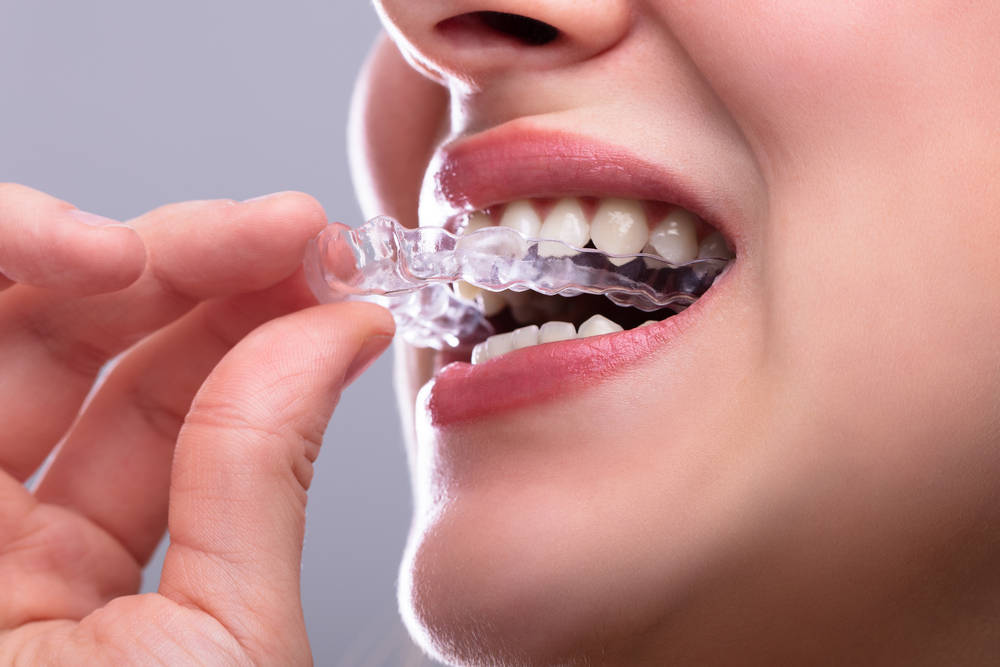Why is Gum Health Important?
When most people think about oral health, they focus on keeping their teeth clean and cavity-free. But we know you know that gum health is important. And in fact, gum...

Invisalign is the best way to obtain straighter teeth without having to deal with uncomfortable brackets and wires. However, while they’re considered less painful than traditional braces, Invisalign treatments are still accompanied by minor discomfort during specific points throughout your treatment.
Here’s when you can expect your teeth to feel uncomfortable during your treatment plan and what you can do to help manage any discomfort.
Those who are familiar with traditional metal braces know that orthodontic treatments typically come with pain and discomfort. After all, when moving teeth and straightening the bite, there is bound to be some pain. And just like traditional braces, you will experience tenderness and discomfort with Invisalign, but it is generally less painful than traditional orthodontic treatments.
Patients typically experience discomfort from:
Beginning Treatment
The whole point of Invisalign is to shift your teeth into a straighter, more becoming, healthier smile. In doing so, the aligners have to put pressure on the teeth to get them to move, and pressure often means soreness.
New Aligners
Each time you switch from an old aligner to a new one, your teeth will have to adjust just like they did with the very first aligner. This soreness can be pronounced during the first few days after putting in a fresh set of aligners but will eventually go away on its own as your teeth shift.
The Rest of Your Mouth
The edges of the aligners, while not sharp, can be irritating to your gums and the insides of your lips as your mouth gets used to wearing them. After a couple of weeks, your mouth will adjust to the feeling of wearing the aligners and will develop the necessary callouses to prevent further irritation.
Rough or Sharp Edges
Suppose you run your tongue along the edge of the aligner as you become familiar with the aligners’ shape and feel in your mouth. In that case, a cut can easily happen on your tongue if there is a rough finish on the aligner. Hoffman Dental Care can quickly remedy any rough or sharp edges on your aligners that are causing you pain or discomfort. Just let us know where the sharp edge is, and we can take care of it right away, so no further injury happens.
The most discomfort and pain you will feel during your treatment is when you switch to a new set of aligners. The discrepancy between the current alignment of your teeth and the shape of the new aligner where your teeth need to go will be most significant when you first start wearing them.
Try using these tips and tricks to help soothe sore teeth during Invisalign:
Wear Your Aligners More
Yes, one of the best ways to alleviate the pain you experience with a new set of aligners is to wear them more! The more you wear your aligners, the quicker your teeth will be able to shift and conform to the fit of the new aligner, and your teeth will become more relaxed.
Switch to a New Set Before Bed
Help minimize the amount of discomfort you notice by switching to a new set of aligners right before you go to bed. This easy time change allows your teeth to begin to adjust during sleep when those first few hours of pain set in.
Keep New Aligners in as Long as Possible
A bonus to switching to a new set of aligners at bedtime is the fact that your teeth will have several hours of wearing the new aligner before they have to be removed. Taking out the new set of aligners is often the most uncomfortable part, so making the switch from one set to another at night lets your teeth have some hours of adjustment.
Managing Pain
An Over-the-counter (OTC) pain reliever can be an effective way to help control aligner discomfort. These drugs work by inhibiting the formation of some of the compounds that help to stimulate body pain receptors. You can get a head start on this inhibitory effect by taking a dose of your selected OTC pain reliever an hour or so before you switch to your new set of aligners for an easier transition.
If you find the edge of an aligner to be sharp and irritating, before attempting to adjust on your own, bring your aligner to Hoffman Dental Care so we can make a quick adjustment for you. This type of adjustment is very fast with zero cost to you.